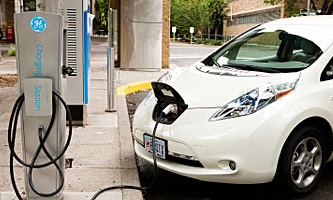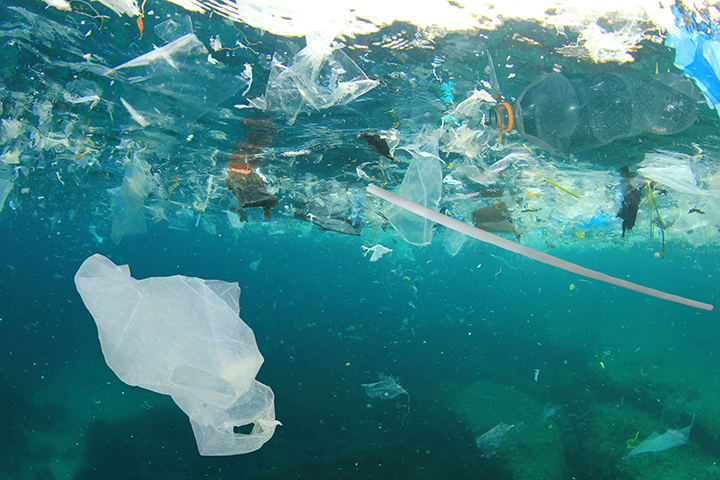
California’s Rooftop Solar is in Danger
Speak Up to Demand Clean Cars Now
Help Us Protect Vital Tribal Systems on California’s Central Coast
The Fight Against Plastic Pollution in California Continues

Last month, the California Public Utilities Commission (CPUC) issued a proposed decision that will seriously weaken the development of rooftop solar in California, and slow California’s progress to meet critical climate goals. We need your help to make sure this decision is not adopted.
The current proposed decision will:
-
Add a steep new monthly Grid Participation Charge on most rooftop solar customers equivalent to $8/kW (meaning roughly $48-56/month for average-sized solar systems) for new rooftop solar customers
-
Slash compensation for exported energy by 64 to 88 percent compared to the current rooftop solar program for new rooftop solar customers
-
Provide a minimal Market Transition Credit that varies by utility and customer segment to new rooftop solar customers that declines 25 percent each year. For a PG&E residential customer, the credit would be $1.62/kW and would offset less than a quarter of the new $8/kW Grid Participation Charge
-
Cut the legacy period for existing customers from the current 20 year term to 15 years from the date their system came online and then provide them the same terms as new customers
-
Exempt low-income customers from the Grid Participation Charge and offer a higher Market Transition Credit, but pay them the same low compensation for their excess energy, ultimately extending the payback period for these customers compared to today’s tariff.
Collectively, these changes will devastate California’s rooftop solar market, which is essential for meeting our climate goals.
Click here to sign a petition to the Commissioners telling them to reject this proposed decision and to draft an alternate decision that is both equitable and will maintain the deployment of rooftop solar. Sign by January 19, 2022.
Multiple studies have shown that the sustained growth of rooftop solar in California must be a key component of the state’s efforts to slow the climate crisis. Rooftop solar also provides multiple benefits to all ratepayers, including decreasing demand for polluting fossil fuels, minimizing the amount of new transmission needed, and improving energy resiliency amid our increasingly extreme weather.
We appreciate you taking action!

California’s transportation sector emits more than 40% of the state’s greenhouse gas emissions, and more than 75% of its oxides of nitrogen emissions. We must accelerate this sector's transition to zero emission to slow the climate crisis and allow communities to breathe healthy air.
Right now, the California Air Resources Board (CARB) is setting requirements for zero-emission vehicle sales by developing the Advanced Clean Cars II (ACC II) regulations. Unfortunately, the proposed sales requirements are far too weak – but you can help make them stronger.
According to the American Lung Association’s 2021 State of the Air Report, California is home to four of the top five most ozone-polluted cities in the country. Setting strong zero-emissions vehicle sales requirements will help lower air pollution and protect public health. As transportation is our largest source of carbon pollution, transitioning to electric vehicles will reduce the risk of climate disasters like last year's extreme fires, heat waves, and floods.
We can’t afford to wait for cleaner air and climate action. Zero emission vehicles are ready for adoption and California must lead the nation towards a healthy, liveable future.

The National Oceanic & Atmospheric Administration (NOAA) is currently considering designating parts of the California Central Coast from Cambria to Point Conception as the Chumash Heritage National Marine Sanctuary (NMS).
The Chumash Heritage site is the first Tribal-led national marine sanctuary nomination in the nation, spearheaded by the Northern Chumash Tribal Council. California's Central Coast supports one of the most unique ecosystems in the world. The northern and southern ocean currents meet in this area, which brings flora and fauna from all across the world. The proposed NMS would cover 156 miles of coastline and unique ocean biodiversity.
Please take a few minutes today to add your name to a letter of support for the project, and leave a brief written comment to the federal register.
The sites have a rich history for the Chumash Peoples, spanning back over 18,000 years. The Chumash Peoples have stewarded much of the Central Coast since the beginning of history, and the region contains numerous sacred sites for the tribes.
Designating the sites as a Natural Marine Sanctuary will protect the area from dangerous offshore drilling, mining, and other forms of pollution which would damage the ecosystem. It will also provide important economic benefits to the local economy, leading to almost 600 new jobs and 23 million dollars from preservation efforts.
There is currently an ongoing public comments period, closing Monday, January 31st. Your support is crucial in convincing the NOAA to grant the designation for Chumash Heritage sites and preserving this vital, historical region.

Plastics are a global threat to our environment, our health, and our economy.
Plastic pollution affects every street, park, stream, river, coast, and ocean in California. Single-use plastic products are amongst the top littered items consistently found at cleanups throughout California. As these items fragment into smaller particles, known as microplastics, they carry toxic chemicals and increasingly contaminate our food and drinking water sources.
Significantly reducing California’s reliance on single-use plastics is critical to meeting the state’s climate and waste diversion commitments.
Looking for a way to help fight the plastic crisis now? The Ocean Protection Council (OPC) just released its draft Statewide Microplastics Strategy, which outlines statewide actions to reduce microplastic pollution in California.
Sierra Club California will be submitting comments supporting the OPC’s actions that will prohibit the sale of single-use tobacco products that contribute to plastic pollution (e.g. cigarette filters), prohibit expanded polystyrene foodware and packaging by 2023 and ban microplastics that are intentionally added to consumer products.
We will also be urging the OPC to strengthen its actions by:
- Requiring reusable foodware for dine-in services
- Banning the sale and distribution of single-use plastics, including balloons, in State parks
- Expanding the ban on single-use hotel toiletries to include single-use plastic bottle water in hotel rooms
The OPC is accepting public comments now until January 21, 2022 at 5pm. Please submit your comments to OPCmicroplastics@resources.ca.gov to help support our efforts to reduce plastic pollution in California. Thank you for your help!
Follow Us:
  |
Thank you for being a part of our work! Consider making a monthly donation. You may securely donate online or by sending a check to Sierra Club California at 909 12th Street, Suite 202, Sacramento, CA 95814.
